Some doubt whether lower-income people and people from marginalized communities even want renewable energy. Our experience and an increasingly vocal movement for low-income solar say otherwise.
Overcoming barriers that reach well beyond the solar industry and into the depths of our financial system. Reversing decades of inequity in the renewable energy industry that have left those who need energy bill savings the most–low-income households–the least likely to be participating in rooftop solar. We have the privilege of coming to work every day to fight for energy equity alongside wonderful partners and communities of good and dedicated people. But this work can also be daunting.
That’s why, before we set ourselves the goal of making clean energy affordable for every American household, we had to know that this was something that the communities we hoped to serve actually wanted. Though Solstice’s mission came out of Co-Founder & CEO Steph Speirs’ own experience, we know that no experience is universal, and we didn’t want to be just another company with a solution looking for a problem.
What we’ve found through our work, though, is that solar solves real problems for households who are struggling to pay the bills. Moreover, not only is support for renewable energy nearly universal, but Solstice has increasingly joined forces with organizations that are based in working class communities and communities of color and that are advocating for local clean energy.
Given that a recent study showed 50 million households fall under even the most conservative estimates of low-to-moderate income (LMI) households, we think it’s time that the solar industry takes a serious look at the potential of low-income solar.
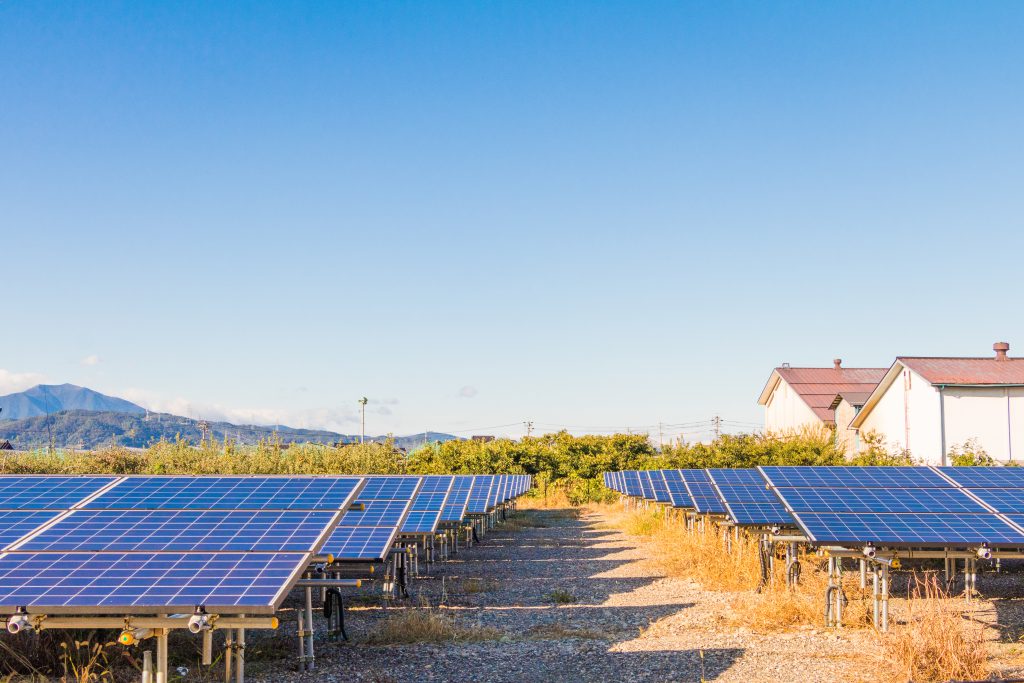
Table of Contents
Low-Income Families Put More of Their Income Towards Energy
It may sound counterintuitive at first, but people with low incomes actually end up paying more for their energy–by a lot. Because they tend to live in older housing and have older appliances, low-to-moderate income Americans pay more per square foot of their home for energy. In fact, low-income households on average spend three times as much of their income on energy as the rest of us. Black and Latino households also spend more than white ones.
Behind these numbers are hard decisions. With such a large proportion of people’s income going to energy, they often find themselves choosing between basic necessities like heating, water, food, and light. Especially for the elderly and other vulnerable groups, this can easily translate into threats to individuals’ health and well-being. Seasonal changes in energy bills can make the challenge even worse, concentrating the worst impacts into the months when temperature extremes can become dangerous.
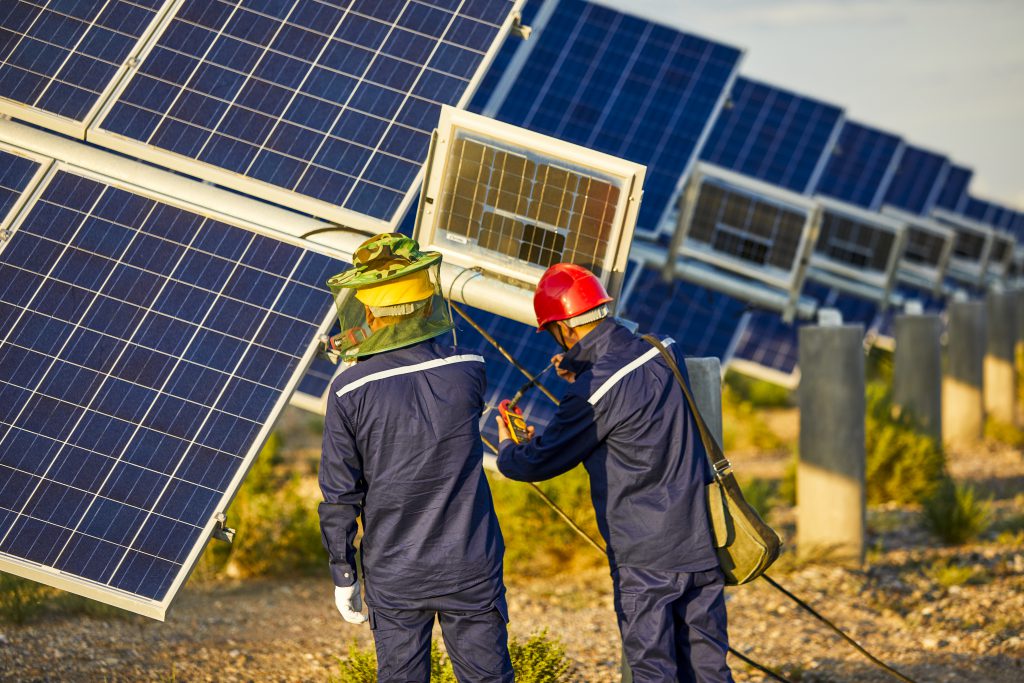
Solar Solves Key Cost Challenges for Low-Income Households
Solar is now one of the cheapest forms of energy available to us. Recent years have seen such dramatic declines in the cost of solar technology that it now outcompetes coal and natural gas in many areas of the US. As more states have allowed people to get credits on their utility bills for the energy that they put into the electric grid, solar has helped more households save on their energy costs.
What’s more, solar doesn’t depend on a fuel source to run–meaning that we can rely on its ability to generate energy at that affordable price, regardless of international commodities markets, seasonal fluctuations in oil and gas production, or other factors. With properly designed policies, low-income solar can help residents stabilize their bills and avoid the biggest peaks in their energy costs.
Low-Income Solar Helps Address Resiliency Challenges for Marginalized Communities
Finally, solar is one of the most resilient forms of energy. Historically, low-income communities have often had to wait longer than more affluent areas to get re-connected to the energy system in the wake of storms and other natural disasters. This disparity was again made clear last year in the wake of Hurricanes Harvey and Maria, which affected Houston and Puerto Rico, respectively. The difference in federal resources allocated to each disaster was striking, leaving Puerto Rico with an unheard-of 11-month path to full re-electrification.
The bright side? Solar. In the days after Hurricane Maria, there were a few places in Puerto Rico where people could charge their cell phones and other batteries, and those were places with their own standalone solar systems. Solar panels are incredibly durable, and when installed with a battery system, can keep the lights on and appliances running after a storm.
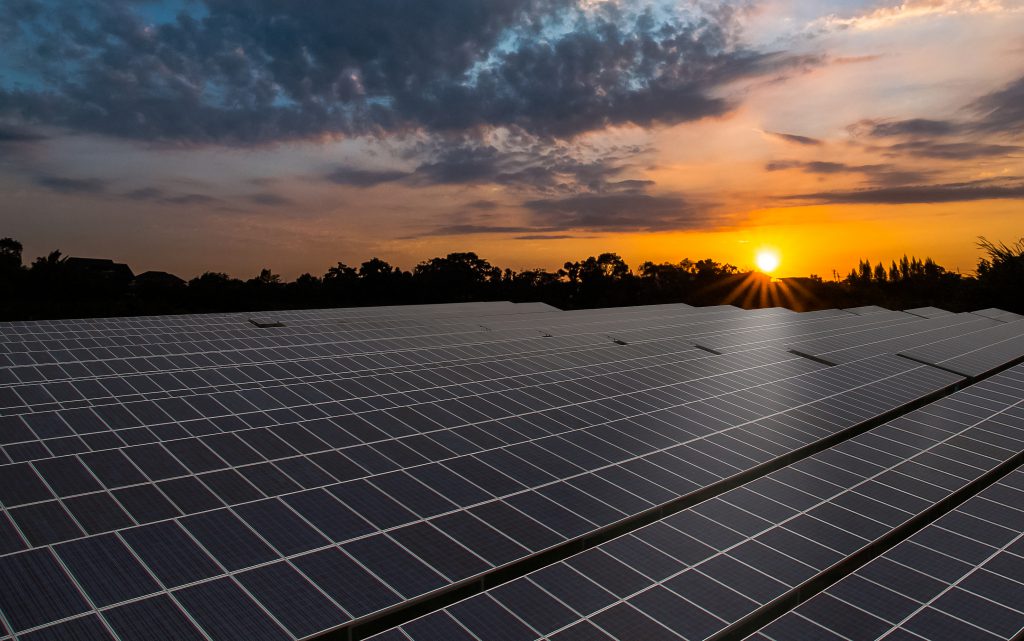
We have a community solar project that allows you to save 10% on your bill.
As we detailed in this blog post, the same principle applies not just at a household level, but at a community one. If the larger power grid is taken down but a local community’s solar-powered grid can be cut off and run independently, this can allow local communities to bounce back more quickly after a natural disaster.
Solar is thus not just a tool to bring savings and cost stability to marginalized communities. Policies that support low-income solar can also empower marginalized households by granting them increased autonomy and resiliency in the face of adverse events.
Support For Renewable Energy Cuts Across Income
So, with all of these benefits, why isn’t there more widespread low-income solar adoption?
If one thing is clear, it’s that it’s not due to a lack of support. Recent data show that 89 percent of Americans support expanded renewable energy production, with more than half us supporting a 100% renewable energy target even if it were to raise our bills by 30 percent (which, of course, it won’t).
And though there is little macro-scale data looking specifically at low-income perspectives on solar, our own experience working with prospective solar households has shown us that the answer to this question is actually quite simple: low-income households want solar and bill savings just like everyone else–they just don’t have the same level of access as their higher-income counterparts.
This finding is backed up by groups like the Asian Pacific Environmental Network and PUSH Buffalo, which are organizing in predominantly working class communities to demand local, sustainable, affordable clean energy. And not only are they getting projects done, these groups are giving voice to demand for clean energy in marginalized communities and to the obstacles that people face in getting access.

Low-Income Solar Hasn’t Taken Off Because Of Stubborn Market Barriers
As we’ve covered extensively in past blog posts, there are generally three requirements for households looking to install rooftop solar, and all three can act as barriers to lower-income households:
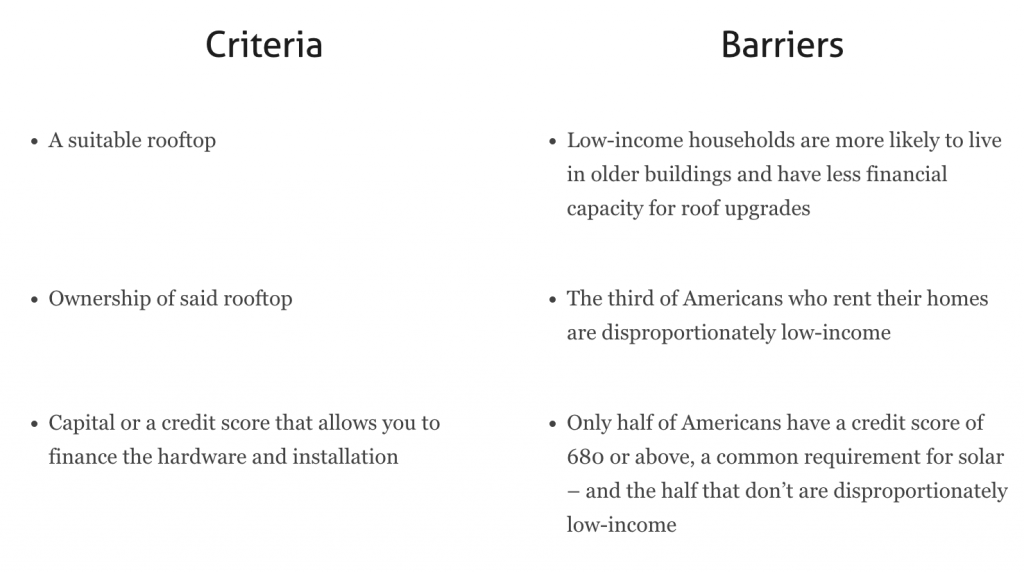 This table should make it clear just how hard it can be for low-income households to get access to solar, especially considering that many low-income households are confronted with two or all three of these obstacles.
This table should make it clear just how hard it can be for low-income households to get access to solar, especially considering that many low-income households are confronted with two or all three of these obstacles.
Fortunately, it also lays a clear path to expanding U.S. solar access in America. By tackling each of these issues, Solstice is doing just that–and opening a national pipeline of inclusive solar projects in the process.
Inclusivity Is Solar Energy’s Path To Scale
Building an inclusive solar market is no easy task, but the math is simple: Solar will never reach its full potential when four out of every five Americans are left out. Expanding inclusion will make it easier for project developers to find willing participants for their projects–driving down costs, increasing investment, and taking the solar industry to scale.
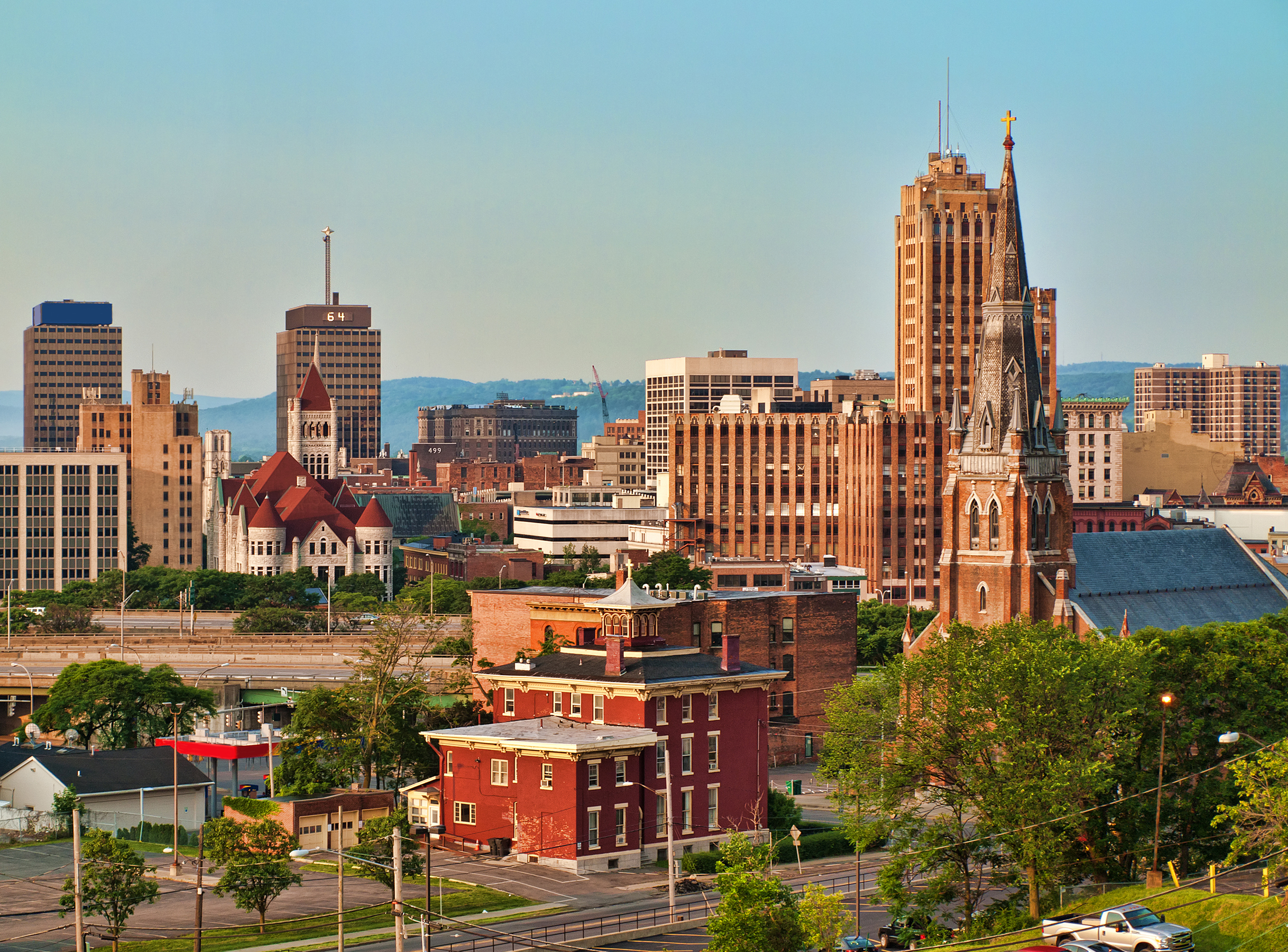
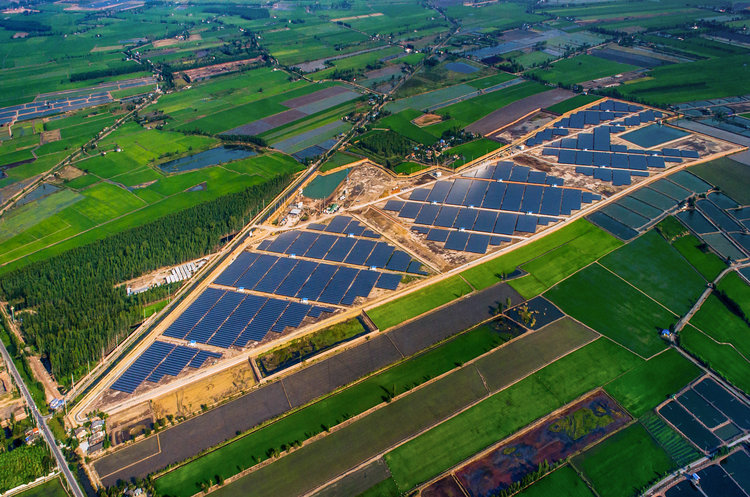

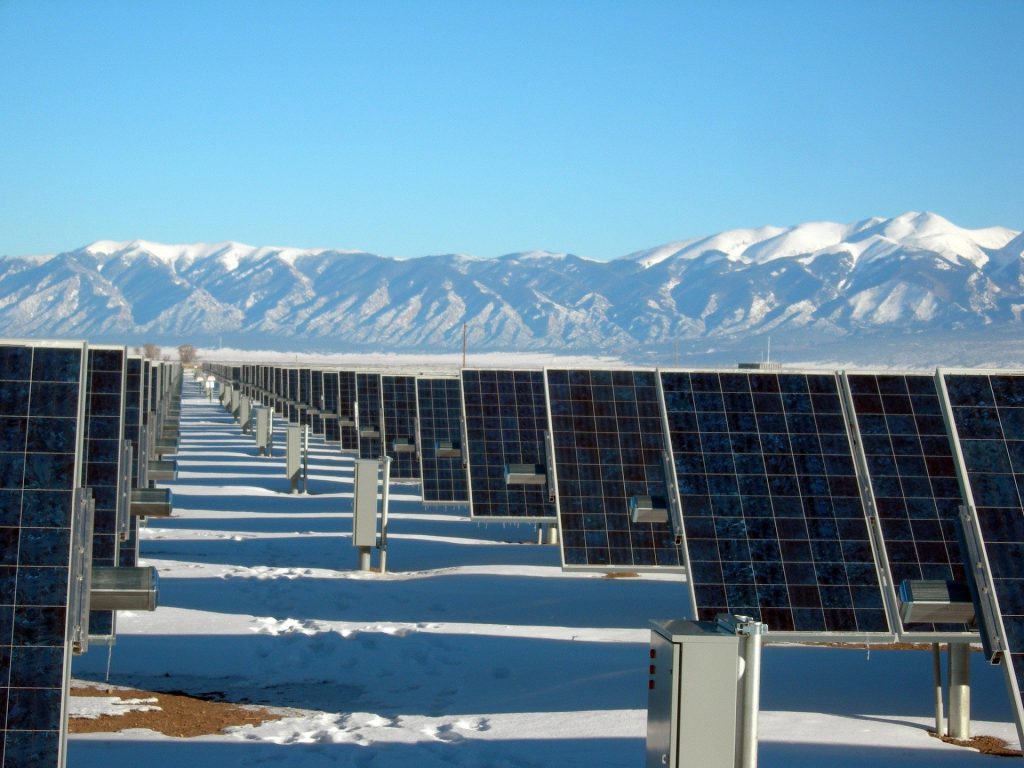

I really like your blog.. very nice colors & theme. Did you design this website yourself or did you hire someone to do it for you?
Thanks, Terri - the marketing team designed it. Really proud of them.
very informative blog.. thanks for sharing this with all
Great article Forest! President’s administration tariffs on solar products have led to job decrease in so many states like California; where over 70k job losses has been reported. Low income communities need community solar. Harmful carbon emissions also come from cars and the more electric vehicles get adopted, the better it will be for city pollution levels.